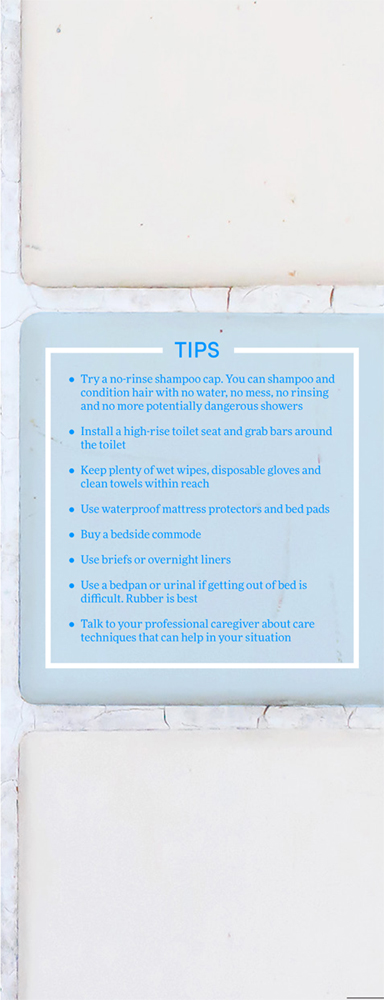Bathroom Blues
 In caring for your loved one at home, you’re learning to manage challenges posed by mobility, memory, illness or a combination of those. Unfortunately, you’ve discovered — or soon will — there are some things no one wants to talk about. So we’ll say it for you… In caring for your loved one at home, you’re learning to manage challenges posed by mobility, memory, illness or a combination of those. Unfortunately, you’ve discovered — or soon will — there are some things no one wants to talk about. So we’ll say it for you…
Toileting issues are or will be a concern. Your loved one might be embarrassed to ask for help. You might be afraid to offer it. It’s awkward. It’s uncomfortable. Acknowledge that it’s a sensitive topic for both of you, but it’s an important part of daily life that you can help loved ones with, just as you might help them eat or get in and out of bed. For a host of reasons – health first and foremost – have the discussion as soon as any part of bathroom tasks becomes an issue. Ask which aspects of toileting your loved one finds difficult. Sitting down? Standing up? Reaching for supplies? Getting clean? Then work together to find acceptable solutions.
Just Can’t Go Can Get Serious
Not eating enough fiber or drinking enough water, being stuck in bed and taking certain medications can cause constipation, which can, unfortunately, result in bowel impaction. That means a mass of stool has blocked the colon and can’t move. It can cause pain and vomiting, and result in hospitalization. Call the doctor immediately with signs of impaction.
To prevent constipation, especially if a person is taking a narcotic, Miralax or another stool softener will help keep things moving. Talk to your doctor or homecare agency for recommendations.
Under Pressure
Stay proactive in toileting techniques. Find a routine that works best for you and your loved one, and clean any bed leaks quickly because damp skin can lead to pressure sores.
Prolonged contact with water, urine, feces or sweat causes the skin to soften and break down. Change soiled clothing and bedding quickly, and ensure your loved one is clean and dry. If necessary, use a skin sealant or moisture barrier. Typically sold as creams or ointments with zinc oxide, lanolin or petroleum jelly, they form a protective barrier. Your doctor or homecare agency can recommend one.
Danger signs are areas of skin that are not broken but are red, discolored or show changes in hardness or temperature compared to surrounding areas. When you press on the area, it stays red and does not lighten or turn white and the redness is still there 30 minutes after the pressure is removed. Experts say a pressure sore at this stage can be reversed in about three days if all pressure is taken off of it. Call your doctor for assistance.
If the skin is broken, get pressure off of the site and call your doctor immediately. 
 Secrets No One Told You About Family Caregiving Secrets No One Told You About Family Caregiving
|